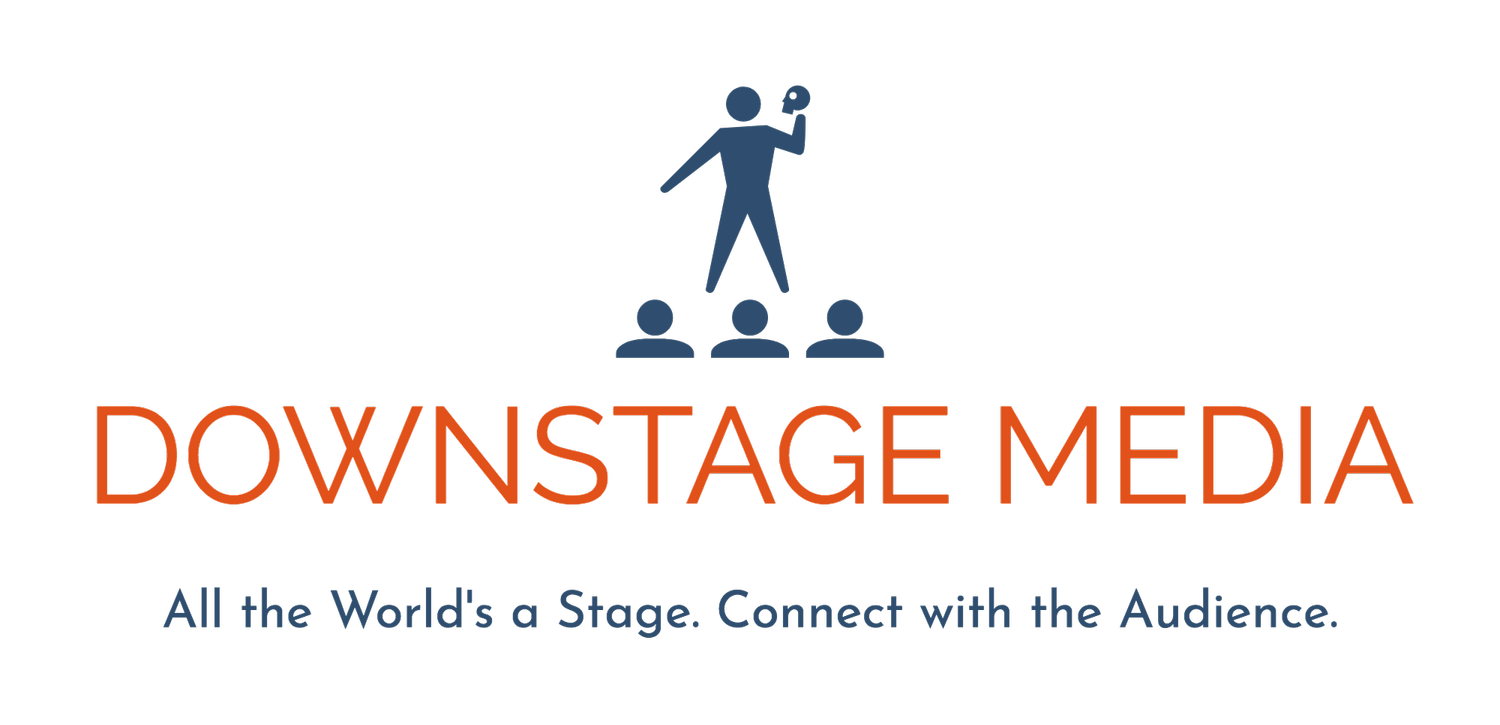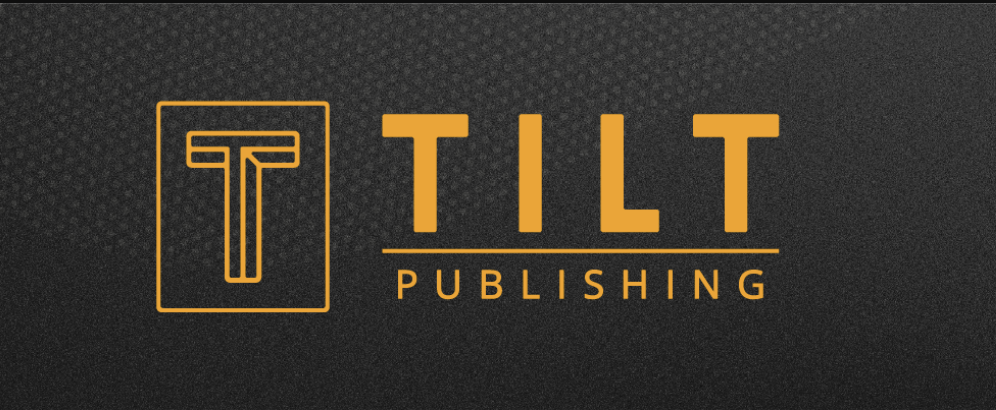The Content Production Team: How to Turn Thought Leadership into a Scalable Marketing System
Every thought-driven company faces the same challenge: the founder or keynote speaker can generate ideas faster than the company can publish them.
At Downstage Media, we’ve seen this firsthand with clients like BetterCulture, Envisia Learning, and TalenTrust. There’s a brilliant thinker at the center—someone whose ideas shape the company’s message—and the team is tasked with turning that brilliance into consistent, measurable marketing.
The tension is always the same:
Brilliance — a steady flow of ideas, insights, and stories.
Bandwidth — the systems, strategy, and time it takes to turn those ideas into impact.
Great ideas deserve structure that scales.
The most successful B2B marketers know this. According to the B2B Content and Marketing Trends: Insights for 2026 report, 61% say their content strategy effectiveness improved this year—and half of that improvement came from refining their strategy and implementing new technology.
The takeaway: content effectiveness isn’t about doing more at a faster pace; it’s about focusing at a more deliberate one.
That’s why we use a structure called the Content Production Team—a simple way to clarify who does what so thought leadership becomes a repeatable system, not a scramble.
The Content Production Team is made up of three roles:
The Talent – the thought leader or speaker who generates ideas and connects with the audience.
The Stage Manager – the executor who packages, publishes, and distributes content.
The Director – the strategist who connects creativity to business goals.
When these three roles are in sync, your content performs like a production instead of a guessing game.
In this post, we’ll look at how each role contributes to a well-run content system—and how concepts like those Robert Rose discusses in his book Valuable Friction can help your company balance speed with substance.
It Takes More Than Brilliant Ideas to Make Thought Leadership Work
A strong thought leadership program is vital to a company. It does more than boost business results—though that’s certainly a key measure of success. According to the 2026 B2B Content and Marketing Trends Report from the Content Marketing Institute and MarketingProfs, 63% of B2B marketers say business impact is one of the top ways they evaluate their thought leadership content.
But it’s not the only one. Marketers also look to metrics like:
Audience engagement
Audience feedback
Brand authority
Together, these measures show that there are benefits to thought leadership outside of driving revenue: building relationships, reputation, and relevance.
The issue, though is that 40% of B2B marketers can’t get their content to do what they want it to do.
However, of the over 1000 B2B marketers that were surveyed, 52% said that when their marketing is effective, it’s because of the company’s skills and capabilities.
The idea here is to:
cast the right people in the right roles within the company
give them what they need to be create content according to best practices
then give them the space
That last part: giving them the space is what author and advisor Robert Rose of Seventh Bear calls “valuable friction.”
In each section, we’ll get into how each role can use Rose’s concept of valuable friction to get the most out of each person who’s placed in each role.
The Content Production Team: Three Roles of a Simple Content Framework
For companies that have a keynote speaker at the helm, it’s vital to publish content both consistently and strategically. I’ve put together an organizational structure called the Content Production Team to help you understand who needs to do what - and how to get the most out of each role.
The Content Production Team is made up of three different roles:
The Talent
The Stage Manager
The Director
Let’s get into each one and how they’re helpful in publishing strategic content consistently.
1. The Face of the Content aka The Talent
Annie Figenshu with author and strategist Robert Rose, whose book Valuable Friction explores why slowing down can create stronger marketing systems.
When your company is built around a thought leader or keynote speaker, your job is to put their work—and their voice, ideas, and face—in front of your audience.
Content is how you do that.
And, for most companies, that part feels easy at first.
The thought leader comes up with an idea, turns it into a keynote, delivers it on stage, and then expands on it through blog posts, podcasts, newsletters, or social media.
I’ve seen companies try to let “the brand” do the talking instead. But that never connects. It doesn’t build trust, and it doesn’t drive leads or sales.
Human nature is simple: people connect with people.
There’s a reason LinkedIn promotes posts from personal profiles more than from company pages. The algorithm favors content that feels human and relational. When people engage with you, not just your logo, your reach expands. (More on this in The Unofficial LinkedIn Algorithm Guide for Marketers.)
Here’s what The Talent does inside a content system:
Interacts with the audience
Knows how to differentiate their content
Understands the audience and what they need
Understands the marketing strategy
Stays compliant with content governance
Uses AI tools to capture ideas
Creates the raw content (in audio, video, or written form)
A vital part of this process is what Robert Rose calls creative friction.
In his book Valuable Friction, Rose writes:
A challenge, a boundary, a rule, or a resistance that forces focus. It makes the creator ask: What matters here? What can I do with what I have? How do I turn less into more?
The goal is to give The Talent space—to think deeply, to refine ideas, and to codify insights in a way that only they can. That’s what helps your brand stand out.
Rose reminds us that taking the time to capture and articulate your ideas—rather than outsourcing everything to AI—makes your thinking more distinctive:
That’s the deeper cost of unchecked convenience. Not that it makes things too easy—but that it makes them less distinct. And in a world where trust is fragile, attention is fleeting, and meaning is often manufactured, that’s a cost too high to ignore.
The Talent’s job, as the face of the brand, is to make sense of the world through the lens of your industry—and get those raw ideas down.
Then, those ideas move on to the next person on your Content Production Team: the one who packages, polishes, and publishes them.
The Stage Manager.
2. The Implementer aka The Stage Manager
Theater wouldn’t function without stage managers. Full stop. They’re the ones who make sure the creative and technical elements align — and that it happens the same way, night after night. They’re indispensable to any production.
And every brand with a thought leader as its face needs a Stage Manager too.
The Stage Manager takes the Talent’s raw ideas, packages them, and distributes them — whether that’s a blog post, a YouTube video, or a social clip. They don’t decide where the content goes, but they follow the strategy to make sure it gets where it’s supposed to go, on time and on brand.
Here’s what a Stage Manager does inside a Content Production Team:
Packages the raw content
Publishes the packaged content
Follows the plan set by The Director
Understands operational friction
Uses tech tools to create and distribute content
Protects The Talent’s time
Implements best practices for content marketing
Uses AI tools to polish, package, and publish content
Someone on the content team has to stay fluent in the latest tools and technology — and that’s the Stage Manager. According to the Content Marketing Institute, 13% of marketers said their content strategy effectiveness significantly improved last year, and 48% said it somewhat improved. About half of that improvement (51%) came from new technology implementation.
According to the B2B Content and Marketing Trends: Insights for 2026 report, 61% of B2B marketers saw an improvement in their content strategy effectiveness this year, with 13% reporting significant gains.
In other words: someone has to know how to productize, streamline, and systematize.
The Stage Manager also understands the architecture of your content. As Robert Rose puts it, they know “what goes where, why it matters, and how it connects.”
New data shows that new technology implementation was a top driver of improved content performance for B2B marketers in 2026.
So it’s not just about publishing more content — it’s about understanding how each piece fits into the larger brand strategy, and when it’s time to evaluate what’s actually working.
Rose calls this operational friction. It can look like:
Decision checklists that force trade-offs (“If we say yes to this, what are we saying no to?”)
Story briefs that require a moment of struggle and debate before the resolution
Weekly rituals that surface unfinished work — not to assign blame, but to face discomfort directly
The Stage Manager brings all of that together by managing the publishing rhythm, maintaining consistency, and creating the healthy tension that makes the work stronger.
But the overall strategy? That’s in the hands of The Director.
3. The Content Strategist aka The Director
When I’ve worked with clients in the past, so often they tell me that they are so focused on churning out content that they usually don’t have time to take a moment to see what’s working. Yet, the most successful B2B marketers in the past year have found that their content strategy effectiveness is based on refining their strategy.
Someone has to focus on strategy.
In the Content Production Team, this is the job of the Director. Here’s why it shouldn’t fall on the other roles:
The Talent is focused on coming up with original ideas in the industry and collecting them in raw content. If they are too concerned with the strategy behind what to create, that can inhibit their creativity.
The Stage Manager is packaging, publishing, and distributing that content. If they are too concerned with the strategy behind why they’re doing their tasks, they will lose momentum.
So it’s vital to have someone on the Content Production Team whose role it is to design a strategy and make sure that it’s being carried out. Gary Vaynerchuk refers to this as the clouds and the dirt. You’ve got to have the macro strategy and the knowledge to get your hands dirty to actually make it happen.
In theater, the director not only makes creative decisions, the director also chooses how the production will feel and what technical elements need to be in place so the audience walks away with that feeling.
And it’s not different for a thought leader-driven brand.
Within the structure of the Content Production Team, The Director:
understands overall best practices and and trends in content marketing
designs a content marketing strategy that also aligns with sales goals
designs a content marketing strategy that places content strategically throughout the buyer’s journey
keeps in mind the capacity of the organization
protects The Stage Manager’s capacity.
“[Strategic friction] gives us the space to pause and ask better questions — and the patience to sit with those questions long enough to feel when the answer is right. Because the best strategies don’t just move fast. They move like they mean it.”
The Director embraces what Rose calls strategic friction. Rose discusses in Valuable Friction how the “move fast and break things” mantra showed up in marketing and brand strategy by simply publishing constantly. And do the detriment of all of those involved — from the authors to the audience — because you don’t wait for a great idea. You just publish the fastest one.
[Strategic friction] gives us the space to pause and ask better questions — and the patience to sit with those questions long enough to feel when the answer is right. Because the best strategies don’t just move fast. They move like they mean it.
In other words, the Director brings intention back into the process.
They connect the dots between creativity and consistency, between what gets published and why it matters. They make sure that all company members aren’t just performing — they’re performing with purpose.
Every production needs someone who can see both the story and the stage. That’s what the Director does for your content. They slow things down just enough to make sure the message lands — and that every piece of content moves the audience the way it’s meant to.
Because in the end, strategy isn’t about doing more. It’s about directing what matters most.
When the Content Production Team Works
When your Content Production Team is set up the right way, everything starts to flow.
The Talent has the freedom to think, create, and speak with clarity.
The Stage Manager keeps things running smoothly — publishing on time, keeping systems tight.
And The Director holds it all together, ensuring the story, the strategy, and the schedule are in sync.
That’s when your content starts performing like a production instead of a scramble. You move from “We should post something this week” to “We know exactly what story we’re telling, how we’re telling it, and why it matters to our audience.”
Your thought leader gets to lead.
Your company gets to breathe.
And your brand starts showing up with the kind of confidence that attracts the right audience and keeps them coming back.
Assemble Your Content Production Team
If your content process feels chaotic, you don’t need more posts — you need structure.
The Content Production Team framework gives you clarity about who’s doing what, how it gets done, and how it drives results.
Let’s build that structure together.
Schedule a Call to find out how you can define your company’s roles, map your content rhythm, and create a plan that actually works — on stage and online.

























